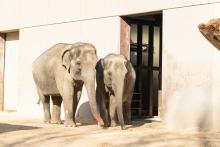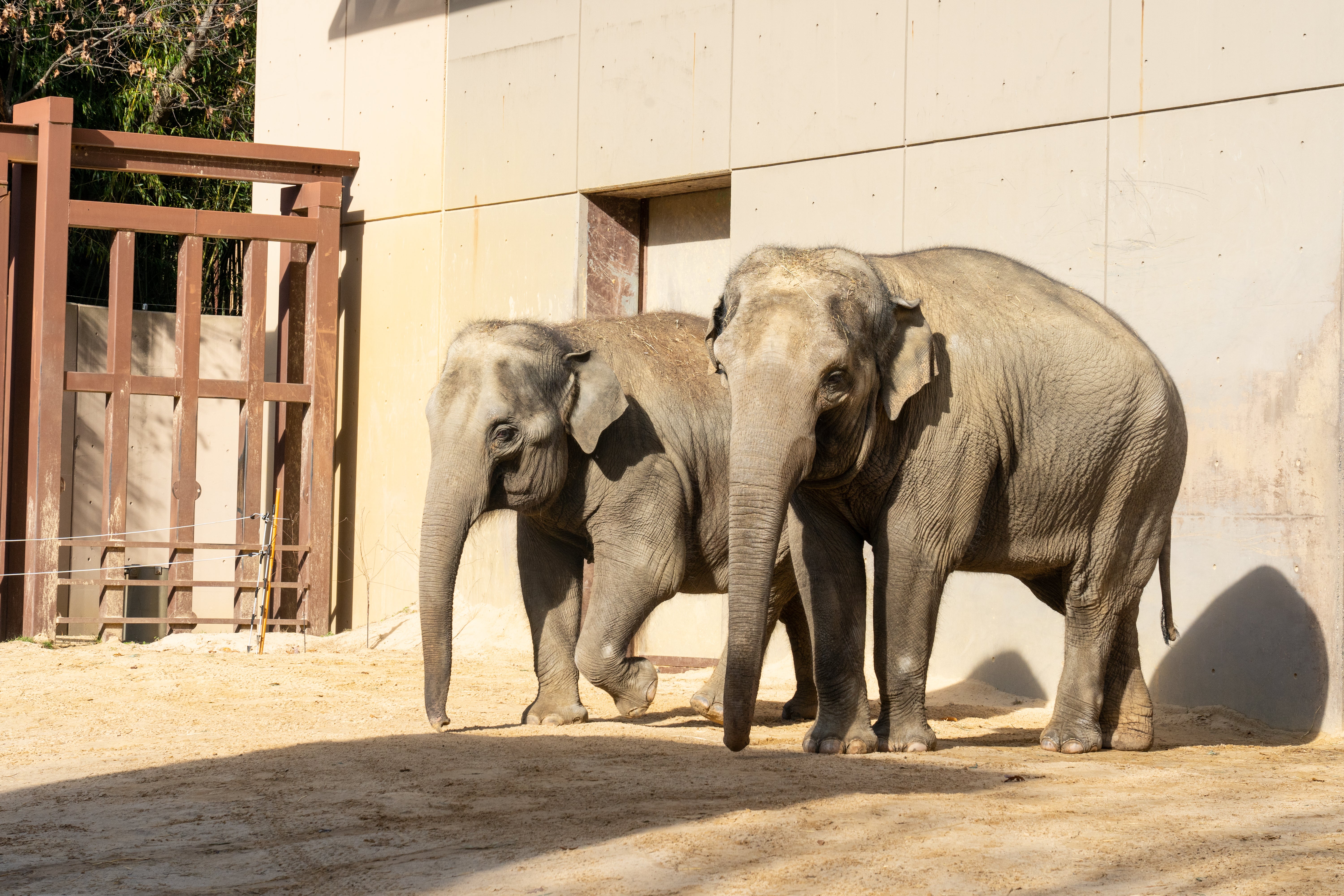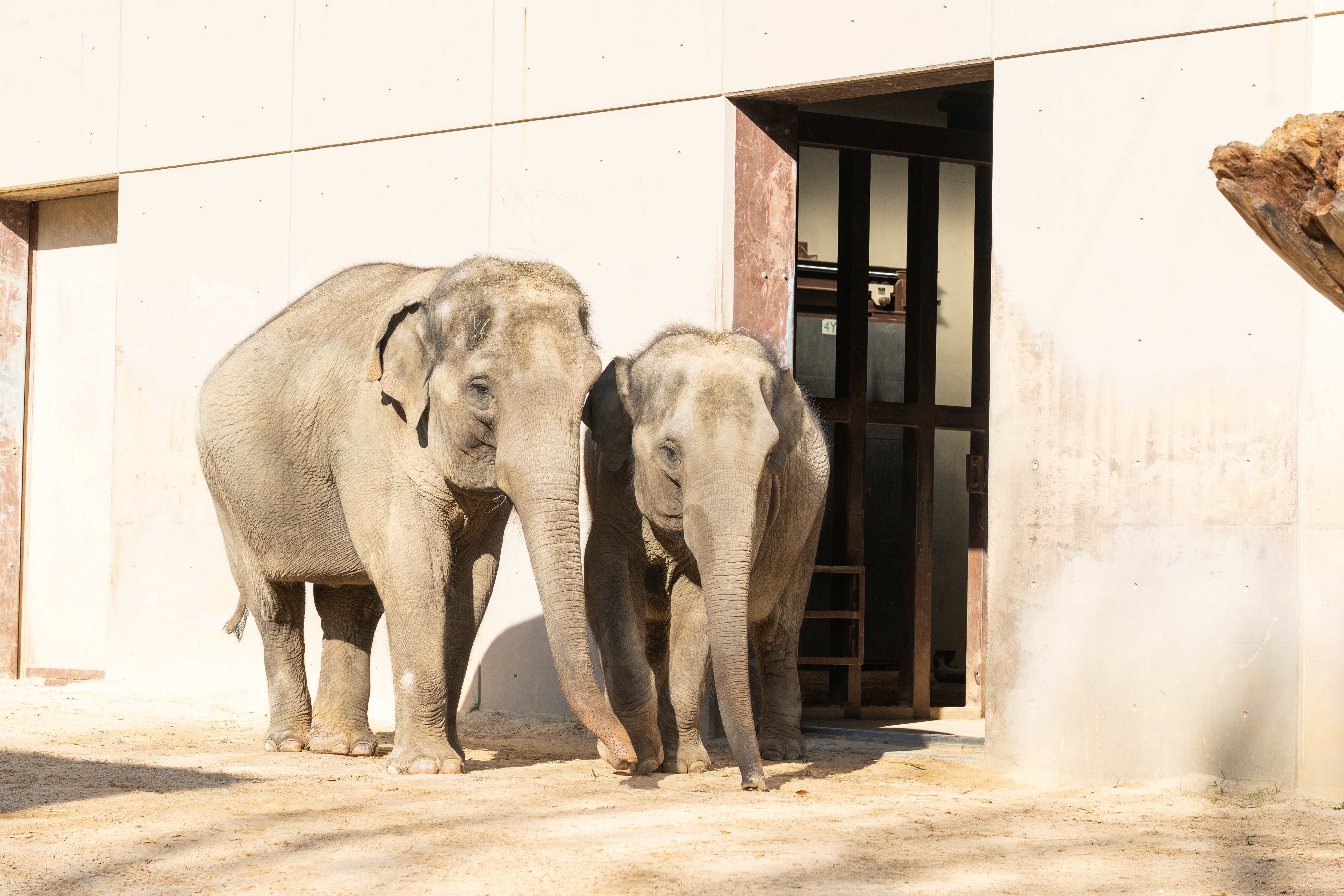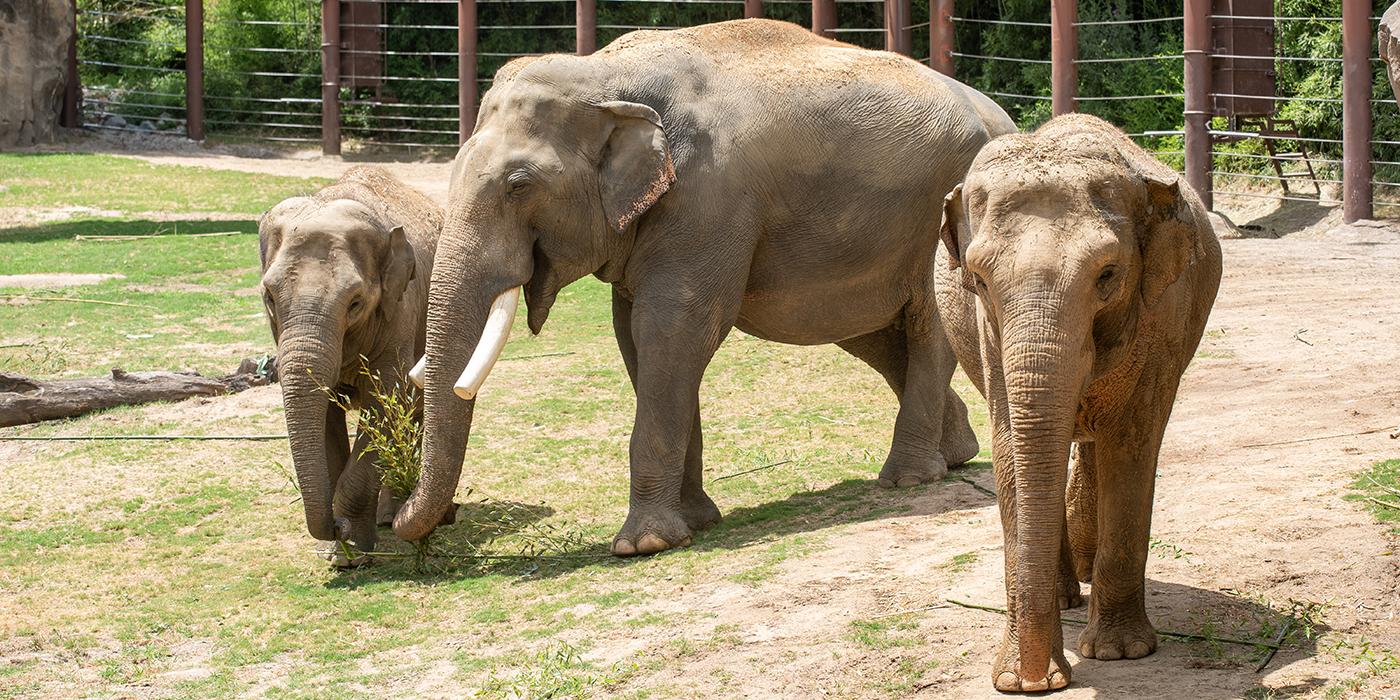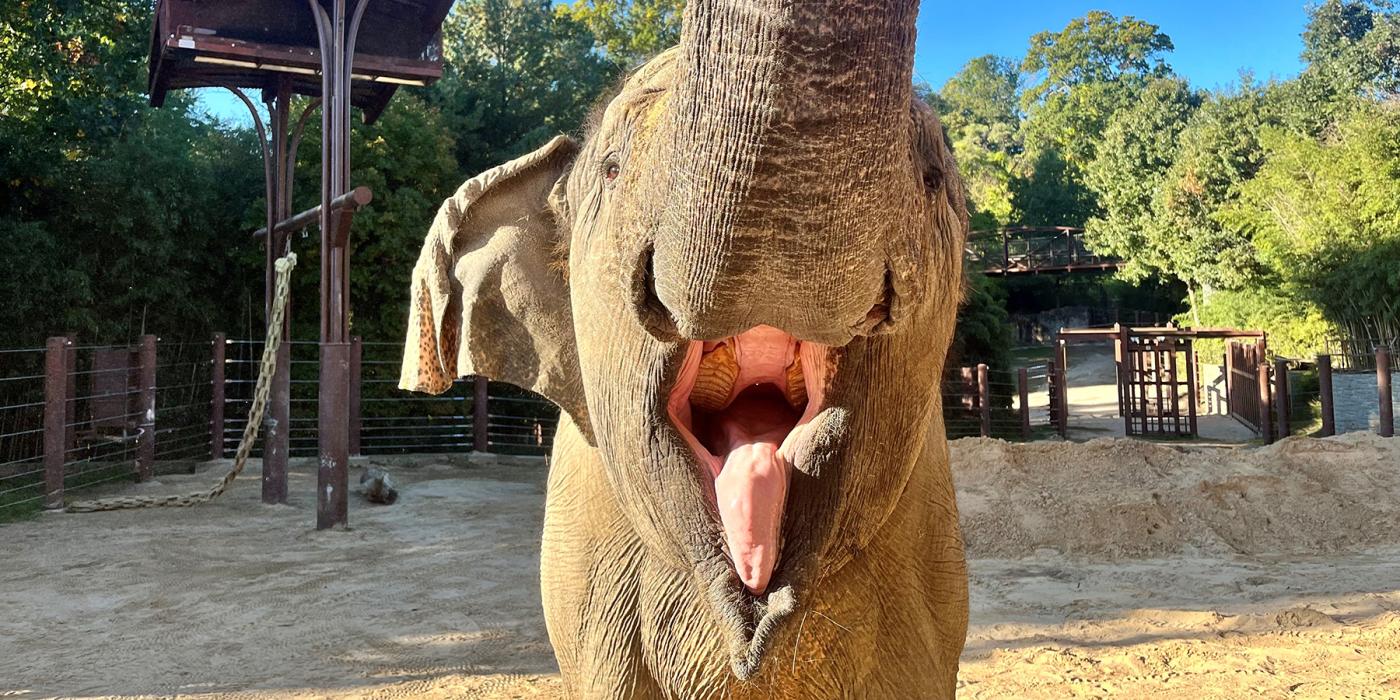New Mother and Daughter Asian Elephants On View at Smithsonian’s National Zoo
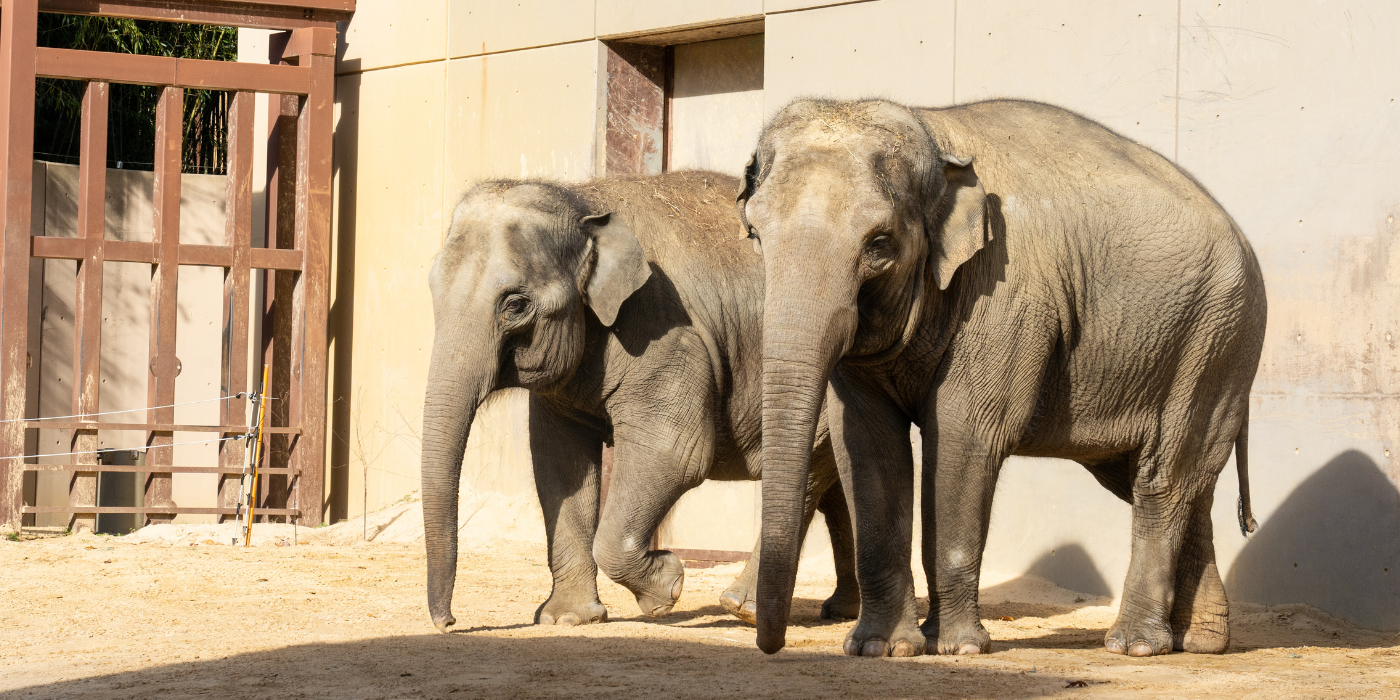
Two new female Asian elephants, 19-year-old Trong Nhi (trong-nEE) and her daughter, 9-year-old Nhi Linh (nEE-lin), are now on public view at the Smithsonian’s National Zoo and Conservation Biology Institute (NZCBI) in Washington, D.C., having completed quarantine following their Nov. 7 arrival. Visitors are most likely to see them in the Elephant Community Center or outdoors exploring their habitat from 10 a.m. to noon daily. They will also rotate on view on the Elephant Webcam.
Trong Nhi and Nhi Linh are a gift from the Rotterdam Zoo in South Holland, Netherlands. They join male Spike (41) and females Kamala (47), Swarna (47), Bozie (47) and Maharani (32) at the Elephant Trails exhibit, a habitat that includes space for socializing, training and playing while providing staff safe access to care for the animals.
The elephant team has begun the process of introducing Trong Nhi and Nhi Linh to Spike and the other females. They conduct “howdy” introductions where the elephants can see, smell and communicate with one another through a safety barrier. The team will look for behavioral cues—including calm demeanor and movements—to determine if the elephants are comfortable enough to share a space.
“We are thrilled at the progress the new elephants are making in their transition to our facility,” said Bryan Amaral, acting associate director of animal care at NZCBI. “Our animal care staff and Trong Nhi and Nhi Linh continue to learn from and about each other. While this is another sign of our commitment to Asian elephants, it also is significant for the sustainability of the Asian elephant population in North America as well.”
NZCBI received a recommendation to breed Trong Nhi and Nhi Linh with Spike from the Association of Zoos and Aquariums’ Species Survival Plan (SSP). The SSP matches individual animals for breeding in order to maintain a healthy, genetically diverse and self-sustaining population.
Trong Nhi was born May 13, 2003, at the Rotterdam Zoo. Her daughter, Nhi Linh, was born Aug. 10, 2013, at the same facility. NZCBI will provide updates on Trong Nhi and Nhi Linh on Facebook, Twitter and Instagram.
Native to 13 countries throughout South Asia and Southeast Asia, Asian elephants are considered endangered by the International Union for Conservation of Nature. Populations are declining due to poaching, habitat loss and human–elephant conflict. Conservation scientists estimate the total population to be between 30,000 and 50,000 individuals.
Elephant Trails—where visitors can experience the sights, sounds and smells of a multi-generational Asian elephant herd—is the cornerstone of NZCBI’s campaign to save this endangered species from extinction. NZCBI’s rich history of caring for and studying Asian elephants spans more than a century.
For more than 50 years, NZCBI scientists have been at the forefront of researching and conserving Asian elephants at the Zoo and in their native habitats. They are creating a comprehensive view of Asian elephant biology, behavior, reproduction, health, genetics, migration, elephant endotheliotropic herpesvirus (EEHV) and the challenges surrounding human–elephant conflict. Because of its existing relations with U.S. and foreign governments, non-governmental organizations and major academic and zoological institutions in elephant-range countries, NZCBI is uniquely positioned to spearhead efforts that support quality life for Asian elephants in zoos and save them in the wild. For more background, an overview of NZCBI’s Asian elephant care and conservation program is available.
About the Smithsonian’s National Zoo and Conservation Biology Institute
The Smithsonian’s National Zoo and Conservation Biology Institute (NZCBI) leads the Smithsonian’s global effort to save species, better understand ecosystems and train future generations of conservationists. Its two campuses are home to more than 2,000 animals, including some of the world’s most critically endangered species. Always free of charge, the Zoo’s 163-acre park in the heart of Washington, D.C., features 1,800 animals representing 360 species and is a popular destination for children and families. At the Conservation Biology Institute’s 3,200-acre campus in Virginia, breeding and veterinary research on 200 animals representing 20 species provide critical data for the management of animals in human care and valuable insights for conservation of wild populations. NZCBI’s 305 staff and scientists work in Washington, D.C., Virginia and with partners at field sites across the United States and in more than 30 countries to save wildlife, collaborate with communities and conserve native habitats. NZCBI is a long-standing accredited member of the Association of Zoos and Aquariums.
# # #
Related Species:
Image Gallery

